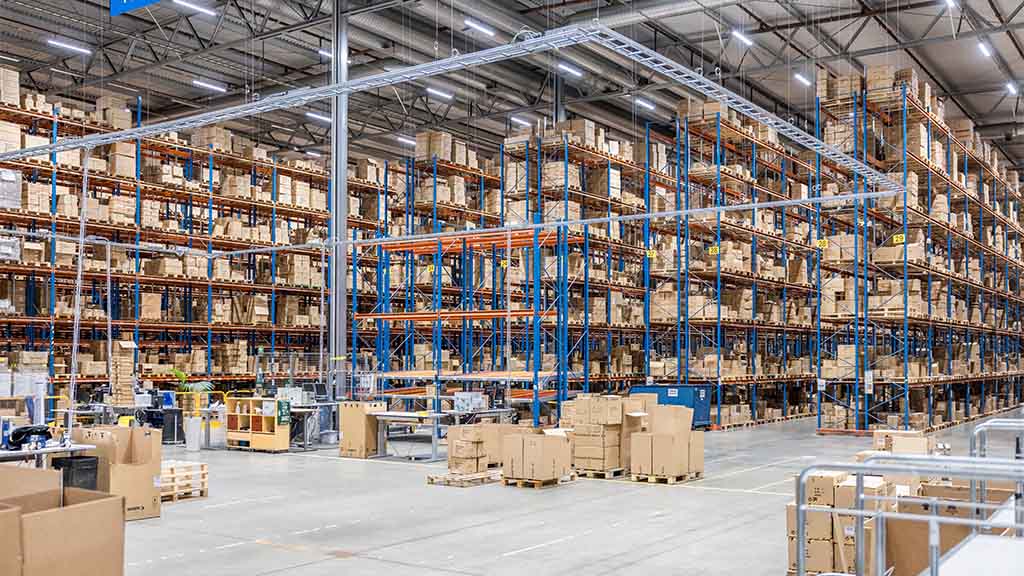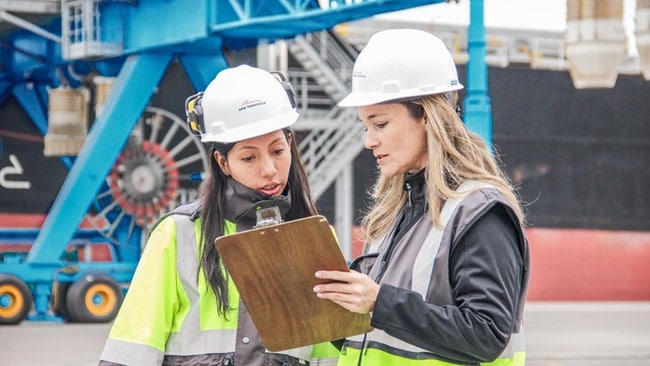Many retail and lifestyle brands hoped for a more predictable operating landscape this year. But, in the first half of 2025 alone, they have navigated everything from shifting tariff policies and rising fulfilment expectations to persistent economic uncertainty and fluid sourcing decisions. The result? Supply chain resilience has become a daily operating condition. The conversation has moved on from recognizing pressure to responding strategically. And warehousing sits at the centre of that response.
For leaders recalibrating their fulfilment strategies, strategic warehousing in 2025 is more than just adding square footage or negotiating unit rates. It’s about repositioning networks, partnering for adaptability, and building systems that can flex with demand, not just fulfil it.
In this article, a follow-up to our earlier piece on warehousing pressures, we explore how leading lifestyle and retail brands are adapting their supply chains through better-placed, better-partnered, and better-prepared warehousing models.
The operational factor: What brands are really solving for in 2025
Conversations with logistics leaders in early 2025 reflected a market deep in uncertainty: tariffs in flux, mixed economic signals, and volatile demand forecasts. Some brands were frontloading inventory to hedge against potential costs. Others were delaying decisions, holding back until clarity emerged. Either way, the pressure on warehousing was immediate and multidimensional.
While the 90-day extension in trade negotiations between the United States and China has contributed to a temporary easing of trade-related uncertainty, the longer-term outlook remains subject to evolving policy developments. In this context, warehousing strategies must simultaneously address cost efficiency, sourcing flexibility, service expectations, and scalable network design.
The conversations we heard from Maersk’s customers in North America captured the tension clearly: Do we double down on our Midwest hub—or add a coastal node for faster D2C delivery? If tariffs shift again, can we frontload inventory fast enough—and where do we put it? Is our inventory model a buffer or a bottleneck?
Across verticals, five core themes shaped the operational equation in the supply chain:
- Cost pressure meets capacity uncertainty. Leasing rates may have stabilized, but space is still tight in key locations. Modular, scalable warehousing options are critical, especially with potential inventory influxes tied to tariff relief.
- Sourcing shifts demand positioning flexibility. With production shifting across Southeast Asia, there’s a renewed focus on flexible inventory positioning that adapts to origin volatility. The supply chain network must adjust as sourcing shifts.
- Returns and SKU complexity are increasing. In lifestyle categories particularly, reverse logistics is no longer an afterthought. Warehousing needs to handle high-velocity, high-volume SKUs in both directions.
- Fulfilment expectations are driven by speed and proximity. Whether it is retail replenishment or e-commerce surges, brands expect faster speed-to-market, and customers still need next-day delivery precision. The pressure to decentralize and move closer to the customer is reshaping node placement.
- Static models are outpaced by real-time reactivity. In a fluid market, static models fall short. Leaders are moving from planning to pivoting, and their warehousing and distribution models must do the same. There’s a strong push towards visibility and tech-enabled inventory agility.
These pressures have reframed the role of warehousing. It has moved from passive storage to an active supply chain strategy.
The resilience factor: Core shifts in warehousing in 2025
As customer expectations rise and disruption cycles compress, businesses are redesigning how their distribution and warehousing networks operate, not just where they sit. As a function, warehousing has evolved from simply a back-end operation into what now shapes how ready, resilient, and responsive a brand can be.
Here are five defining shifts we’re seeing in 2025, each with real-world implications for inventory planning, customer delivery, and risk mitigation:
- From centralized to distributed
Brands are moving away from legacy single-node distribution centres (DCs) and embracing tri-coastal networks with assets across the East Coast, West Coast, and Midwest to reduce lead times and localize fulfilment—enabling coverage and customer proximity without overextending the network. - From reactive to anticipatory
The volatility of early 2025 pushed many brands into what-if mode: “What if tariffs rise?” “What if volume spikes unexpectedly?”. We’re now seeing more inventory rebalancing ahead of disruption. Brands are scenario planning for shipping delays, frontloading triggers, and overflow responses. They are staging inventory closer to markets for speed and to preserve flexibility when policy or demand swings hit. - From siloed to integrated
Warehousing can no longer operate in isolation from upstream transport or downstream fulfilment. Leading networks are reconfiguring them as cross-functional, integrated hubs with shared stock pools, unified WMS platforms, and layouts built to support B2B replenishment, D2C order velocity, returns processing, and transportation handoffs. - From fixed to flexible
Retailers today aren’t just looking for warehouse space. They’re looking for capacity that adapts to demand. Modern setups, seasonal overflows, and on-demand labour pools are increasingly becoming a standard, especially for lifestyle and apparel brands that face spike-heavy sales cycles or influencer-led volume bursts. - From static storage to agile positioning
It’s no longer about just ‘having stock’. It’s about having the right stock in the right place—ready to move, fulfil, or pivot based on demand patterns or promotional pushes. This means prioritizing proximity to demand. Fulfilment hubs are shifting inland or toward urban centres, depending on retail footprint, last-mile cost pressures, and D2C growth.
The common thread? Warehousing has shifted from an asset decision to a strategy decision. And how these shifts are implemented is often as much about where they’re happening as how.
The geography factor: Building an anti-fragile, resilient warehouse network
Resilience today isn’t about having more warehouses. It’s about placing them with purpose. Businesses are realigning and rebalancing their distribution and warehousing networks for speed, regulatory flexibility, and cost efficiency—in a way that reflects today’s volatility.
What we’re seeing across retail and lifestyle segments is a move toward regionalization. For example, in North America, regional triangulation is on the rise, with facilities anchored on the:
- East Coast for retail replenishment
- Midwest for inventory centralization
- West Coast for import balancing and agility off ports
Some are using blended fulfilment models, combining global distribution hubs for cost efficiency and regional satellites to improve responsiveness. Others are adding overflow capacity or repositioning safety stock to hedge against demand spikes or port-side disruption.
We’re also seeing diversification in facility types—not just to move goods faster, but to delay duties, reduce last-mile costs, and create reroute options—especially as companies weigh when and how to bring in inventory without locking in tariffs or duties too early:
- Cross-docks or transload facilities for rapid movement
- Bonded or FTZ space for tariff agility (even if still limited access)
- Hybrid fulfilment hubs for omnichannel adaptability
It’s about fit-for-purpose positioning. What matters most is what works for each customer’s network. Speed, cost, tariff agility, risk appetite, and container flow management shape how and where inventory moves.
The ability to move faster, absorb shocks, and reallocate based on conditions is what separates a network that bends from one that breaks. Maersk’s multi-node network — spanning ocean, inland, and warehouse — is being actively leveraged to support geographic agility, not just transactional coverage. That’s the difference the right partner makes.
The partnership factor: What makes a strategic 3PL in 2025
What’s the operational difference between a vendor and a partner? One holds your stock. The other keeps your promises. In a volatile landscape, your warehousing partner isn’t just holding inventory. They’re either amplifying your resilience, or exposing your vulnerabilities. Too many brands still evaluate partners by footprint and cost. But in 2025, the smart ones are asking:
- Do they flex when we don’t forecast perfectly?
- Can they onboard quickly during a shift or promotion?
- Will they protect our customer promise when the plan breaks?
Besides weighing on capability, tech maturity, and channel integration, it is also about their process depth and execution reliability. When retailers face spikes, reroutes, or last-minute campaigns, it's the operational process that holds the line, not just square footage.
We’ve had customers come to us mid-contract-mid-crisis because their last partner couldn’t get product out the door. Not because of space, but because of service failure. Price matters. But performance protects brands. The right partner will help you scale. But, they’ll also help you adapt and recover faster, because they know how to respond when things go sideways.
Strategic warehousing is no longer static infrastructure. In 2025, the brands navigating volatility best are the ones with networks that move with their business. They’re flexing capacity up and down based on fluid forecasts, repositioning inventory closer to demand (not just closer to ports), and integrating logistics partners who operate with the same standards as theirs.
And they’re doing it because the questions have changed—from “Is our warehouse full?” to “Can our network pivot when we don’t get a warning?”. This is what resilience looks like in motion. Not reactive. Not theoretical. But designed, tested, and ready.
Be ready for your network to move with your business. Discover more with Maersk Logistics Insights, and learn more about resilient, responsive warehousing strategies, or for more logistics trends and insights, read and download The Logistics Trend Map.
How can you be ready for anything?
Instability is on the rise, causing logistics to feel the pressure of the constant disruptions. Is your business resilient enough? Do you know what it takes to build resilient supply chains in today's world?
Learn how Maersk can help with logistics resilience.
Sign up to The Logistics Pulse newsletter
You did it, welcome onboard!
We're sorry, but there was a problem sending your contact request.
Please review the form fields and ensure all required information is provided correctly. If the issue persists, please contact our support team for further assistance.
Sign up to The Logistics Pulse newsletter
Receive our insights directly in your mailbox by signing up through this form and enter a world of truly integrated logistics. Get inspired by our selection of articles that help you navigate supply chains, understand industry trends, and shape your logistics strategy. You can unsubscribe anytime.
I agree to receive logistics related news and marketing updates by email, phone, messaging services (e.g. WhatsApp) and other digital platforms, including but not limited to social media (e.g., LinkedIn) from A. P. Moller-Maersk and its affiliated companies (see latest company overview). I understand that I can opt out of such Maersk communications at any time by clicking the unsubscribe link. To see how we use your personal data, please read our Privacy Notification.
By completing this form, you confirm that you agree to the use of your personal data by Maersk as described in our Privacy Notification.














